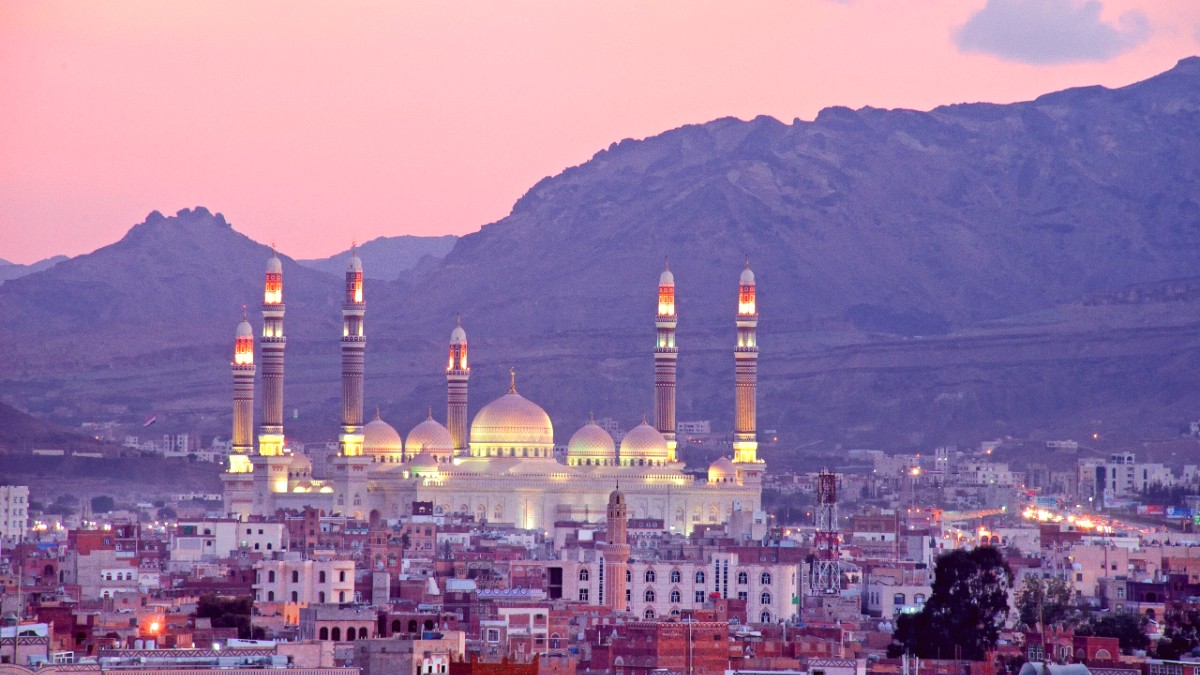
Yemen possesses several iconic landmarks, many recognized globally for their unique heritage. Current conditions prevent safe visitation.
Standard visitor information like hours, fees, or guided options is unavailable for these sites. Access relies entirely on navigating complex security checkpoints and active conflict zones. Formal guided tours are not operating for tourists.
Access to any museum is dangerous and highly restricted.
Access to any industrial or military heritage sites is restricted.
Such locations are highly dangerous due to their nature and the ongoing conflict.
There is no possibility for public or tourist visitation to these sites.
Status and accessibility of memorial sites and monuments are uncertain.
They are often located in areas of past or ongoing conflict.
Yemen's natural landscapes are striking, but largely inaccessible to foreign visitors due to the prevailing security situation.
The highlands, like the Haraz mountains, offer dramatic landscapes. Coastal and desert landscapes also present striking natural beauty.
Limited public parks exist in cities, but their status and safety are uncertain.
Beaches exist on the mainland coast and Socotra. Mainland beaches carry severe security risks. Lakes and permanent waterways are limited.
Wildlife exists (e.g., on Socotra), but organized viewing tours are not available.
Craters, wadis, and unique rock formations exist. Access is dangerous and requires navigating unsafe routes.
The concept of "hidden gems" implies safe, independent exploration, which is impossible in Yemen.
Travel off the few main controlled routes is extremely dangerous due to active conflict, high risk of kidnapping, and lack of tourist infrastructure.
No areas are emerging as safe tourist destinations in Yemen. The country remains a conflict zone.
Most historical sites and attractions are inaccessible or severely damaged. Visiting any attraction carries immense danger.
For foreign personnel whose presence is essential, strict adherence to security protocols is necessary. This involves constant situational awareness.
The main reason for presence in Yemen for foreigners is typically humanitarian aid, diplomacy, or journalism, not tourism.
Movement outside secure compounds is heavily restricted.
Leisure or sightseeing travel to Yemen is strongly advised against by international governments.
Healthcare infrastructure is severely degraded due to the conflict.
Cultural sensitivity and discretion are paramount.
This section details the nature of sites in Yemen for informational purposes only. It is not an invitation or recommendation for travel. The security environment is extremely dangerous, with active conflict, high risk of kidnapping, and widespread unexploded ordnance.
The risk of kidnapping for foreign nationals is critically high throughout Yemen.
Landmines and unexploded ordnance (UXO) are prevalent hazards across the country, specifically in former conflict areas.
Active conflict zones exist, with unpredictable airstrikes, shelling, and ground fighting.
Movement is typically in armored vehicles with security escorts and pre-approved routes.
Not applicable for tourists.Access to all areas is highly restricted and requires specific permits and security clearances.
Independent travel is not possible.Robust communication devices and emergency protocols are standard.
Reliable communication is rare.Emergency evacuation plans are always in place for authorized personnel.
No such services for tourists.Constant, real-time risk assessment dictates all movement and activities.
Situational awareness is critical.Most international governments strongly advise their citizens not to travel to Yemen.
Standard travel insurance policies do not cover travel to conflict zones.
Traveling to Yemen for tourism or non-essential purposes is extremely dangerous and could result in severe consequences, including death or kidnapping.
This content is for informational purposes related to Yemen's cultural and natural heritage, not a recommendation for visitation.
Any mention of sites or attractions describes their historical or geographical existence. It does not imply current accessibility or safety for foreign visitors. The reality on the ground dictates that these locations are beyond safe reach for anyone without extensive security arrangements.
Most Western governments maintain "Do Not Travel" advisories for all of Yemen due to extreme risks.
The humanitarian crisis directly affects safety and infrastructure.
The tourism industry in Yemen has ceased to exist due to the conflict.
Any visitation must be independently and securely arranged, usually by international organizations.
Movement outside secure areas is severely restricted and always risky.
The goal is to minimize exposure to threats. This does not involve tourist activities.
The potential dangers far outweigh any perceived benefits of leisure travel to Yemen.
The country is in a state of conflict, not a tourist destination.
The local population faces immense hardships. Foreign presence for non-essential reasons can divert resources.
The international community's focus is on humanitarian assistance, not tourism development.
Any non-essential foreign presence introduces additional security risks for local contacts and humanitarian operations.